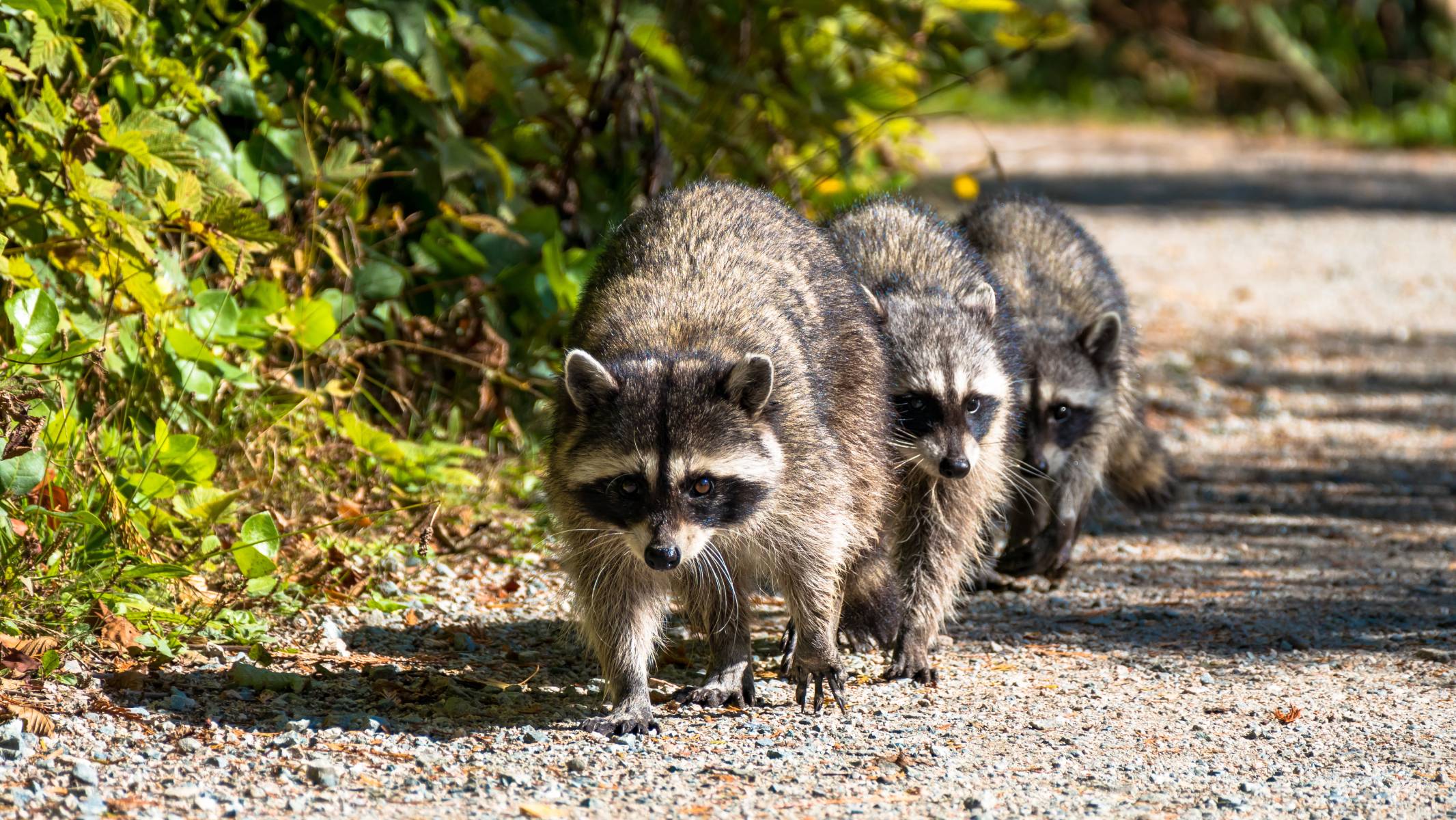
by Erin Snyder
Learn common chicken predators identification, what to look for, and how to protect your flock from these predators.
Predators are a backyard flock owner’s worst nightmare. However, they don’t need to be. With knowledge and preventative care, protecting our flocks from an attack is possible. Learn about five common predators, how to recognize their calling cards, and how to protect your flock.
Raccoons
Raccoons live anywhere and are among the most common and deadly predators likely to visit backyard flocks. Highly intelligent raccoons have been known to open bolt locks on coop doors, rip through window screens, and scale tall fences. Prevention is critical to protecting your flock from an attack, but first, let’s look at a raccoon’s calling cards.
Calling Cards:
Raccoons eat only the tastiest meat, and leave the carcasses scattered around the coop or run. Common telltale signs include:
- Ends of eggs bitten off.
- Crops eaten out of dead birds.
- Dismembered birds.
- Dead poultry found on the site of the attack.
- Heads eaten off or poultry heads in the coop or run.
- Chicken body parts near a water source.
- The entire flock killed, with most of the bodies lying in the coop or run.
- Broken eggs or eggshells near water source.
- Bags of feed torn open.
- Surviving poultry with broken wings or legs.
- Bite marks on the head, neck, or vent area of both the deceased and surviving poultry.
Prevention:
Cover the run sides, roof, and coop windows with a half-inch 16-gauge hardware cloth, and attach predator skirts (hardware cloth buried 6 to 12 inches underground around your yard to prevent digging predators from entering). Leave no gap bigger than 1/2-inch in the coop or run. Never use chicken wire to keep predators at bay, as raccoons, foxes, and other predators can easily rip through the flimsy wire.
House poultry in coops or barns with wood or cement floors to prevent predators from digging under the coop to gain access. Fasten all doors and outdoor nesting boxes with padlocks to prevent curious raccoons from opening doors. Always lock poultry into a secure coop for the night.
Rats
Found anywhere, rats are vicious predators that prey on eggs, chicks, ducklings, juvenile birds, bantams, and even sick or injured adults.
Rats are among the smallest and most destructive predators. A member of the rodent family, rats can chew through walls, wooden floors, and beams.
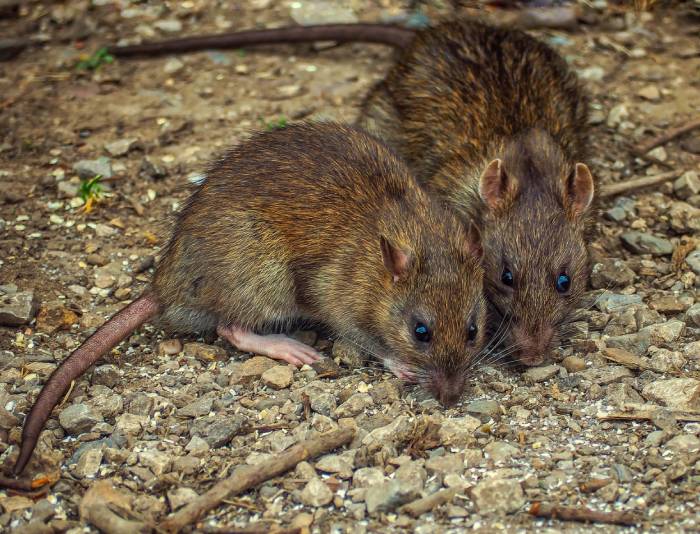
Calling Cards:
- Missing or partially eaten chicks, ducklings, etc.
- Missing eggs with no clues.
- Injured chickens with bite marks on the legs.
- Holes chewed into coop walls, floors, or beams.
- Feed bags chewed open.
- Droppings in the coop and run.
Prevention:
Preventing rats from taking up residence in your coop or run is much easier than trying to eradicate them. Clean up spilled feed, treats, weeds, junk piles, old vehicles, and wood piles from your coop, run, and property to deter rats.
Store feed, grain, and treats in metal trash cans to prevent rats from accessing the food source. Always pick feeders up at night.
Rat-proofing your henhouse may prove tricky, but it isn’t impossible. Cover the run sides, roof, and coop windows with 1/2-inch, 16-gauge hardware cloth, and attach predator skirts to deter digging. Leave no gap bigger than 1/2-inch in either your coop or run. Cover the exterior coop walls and roof with metal siding to prevent rats from chewing the coop.
Poultry should always be housed in barns with cement flooring or by placing the coop on a cement pad to prevent rats from accessing the coop through the floor.
Snakes
Snakes are often known as egg predators, but they also prey on chicks, ducklings, immature poultry, and bantams. Like rats, snakes can be tricky to keep out of the coop and run as they can squeeze through openings smaller than one inch. Here are a few clues if you suspect snakes may be visiting your henhouse.
Calling Cards:
- Missing chicks, ducklings, etc.
- Whole missing eggs.
- Dead adult poultry with a wet head from the snake trying to swallow them.
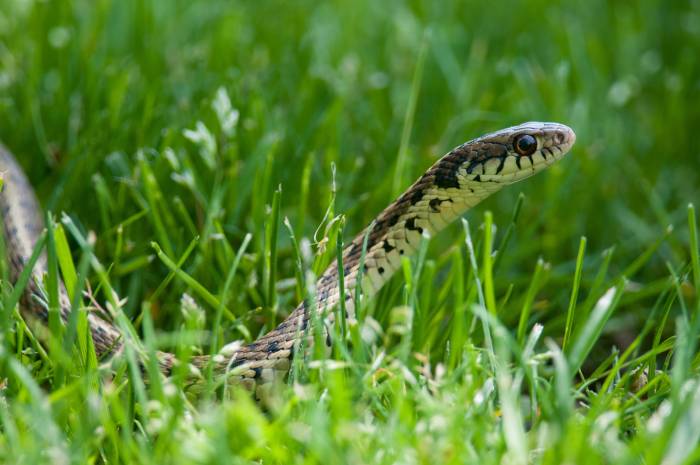
Prevention:
The best way to deter snakes from entering the coop or run is by eliminating rodent populations, as snakes often enter the henhouse for another food source (usually rodents).
Use the same precautions to prevent snakes from entering the coop and run as you would with rodents in the steps above. Following these protocols should eliminate snakes and rats from visiting your coop.
Skunks
It’s easy to tell by the smell alone if a skunk has visited your property. As a member of the Mephitidae family, skunks prey on young poultry and eggs. If you smell something skunky and have missing chicks or eggs, here are a few clues that a skunk may be the culprit.
Calling Cards:
- Empty egg shells.
- Missing chicks.
- Dead chicks.
- Dead chicks with only the abdomen eaten out.
- Skunk smell.
Prevention:
As with all predators, cover the run sides, roof, and coop windows with a half-inch 16-gauge hardware cloth and attach predator skirts to deter digging. Leave no gap bigger than 1/2-inch in either your coop or run. And always lock your flock up at night.
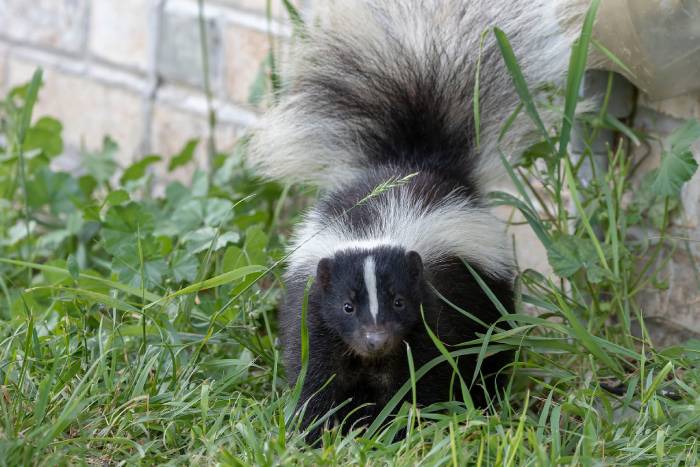
Wooden or cement floors and predator skirts are the best way to deter skunks from entering the coop and run, as skunks are excellent diggers.
Opossums
Opossums usually visit the henhouse hoping for eggs, but they may attack juvenile and adult poultry if hungry enough. Are you worried that your lack of eggs may be caused by an opossum? Here are a few clues:
Calling Cards:
- Empty egg shells in or near the nest.
- Killed poultry partially eaten on site.
- Killed poultry or chicks with only the abdomen or crop eaten out.
- Dead poultry with bites to the neck and breast where the blood was sucked out.
- Dismembered adult or juvenile poultry where the opossum reached through wire to grab birds.
Prevention:
The first rule to prevent an opossum from attacking your flock is to collect eggs. In the morning, collect eggs when you feed and water your flock and again before locking your flock up at night.
Cover the run sides, roof, and coop windows with a half-inch 16-gauge hardware cloth and attach predator skirts to deter digging. Leave no gap bigger than 1/2-inch in either your coop or run. The poultry coop should have a wooden or cement floor for extra protection.
Securing your flock in a completely predator-proof coop and run is the best way to protect them from these five common poultry predators. Following these practices will allow you to rest easy each night, knowing your flock is safe from predators.
Resources
The Ultimate Pet Duck Guidebook: By Kimberly Link
The Suburban Chicken: By Kristina Mercedes Urquhart
Erin Snyder and her family have raised chickens and ducks for nearly two decades. She’s passionate about all things poultry but is especially interested in poultry nutrition, predator protection, egg-laying disorders, and helping chickens live their best lives well into their golden years. You can follow her chicken adventures on her newly hatched Instagram page: https://www.Instagram.com/TheHenHouse
Originally published in the October/November 2024 issue of Backyard Poultry and regularly vetted for accuracy.
…
backyardpoultry.iamcountryside.com
Feed Name : Backyard Poultry
Feed & Health,predator prevention,predator protection,predator-proof,Predators
hashtags : #Common #Chicken #Predators #Identification #Backyard #Poultry




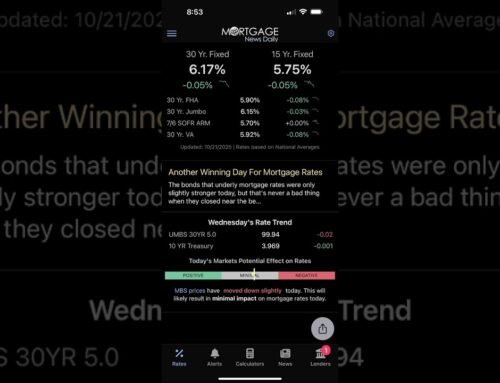

Leave A Comment